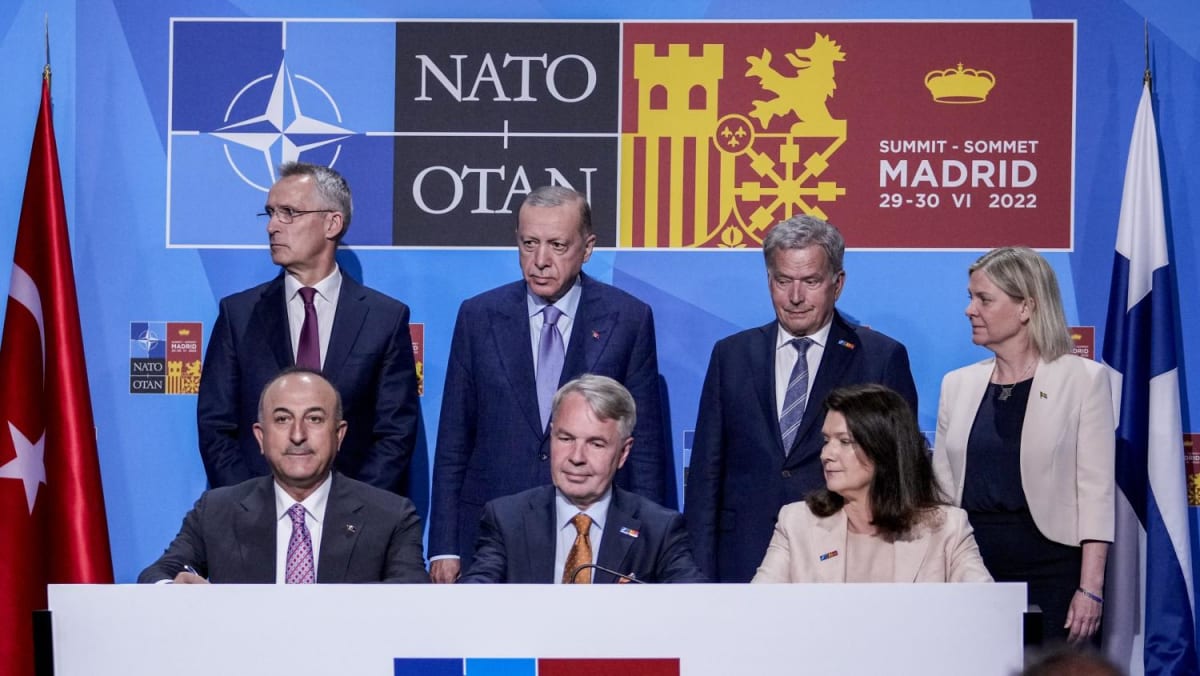How Putin’s hopes to weaken NATO did the opposite
If Russia’s invasion of Ukraine was supposed to weaken NATO and stop its eastward expansion – one rationalization offered by President Vladimir Putin – it seems to have backfired.
Rather than exploit tensions within the 30-nation alliance, Russia’s war seemingly strengthened it, with Finland and Sweden, two close neighbours of Russia, seeking to join.
What’s the point of NATO?
Founded in 1949 to protect Europe against Soviet attack during the Cold War, the North Atlantic Treaty Organization (NATO) has come to represent a fundamental partnership between North America and Europe based on shared political and economic values.
The pledge of collective defence spelled out in Article 5 of the NATO treaty establishes that an attack against one NATO member is considered an attack against all. Membership has grown to 30 nations from 12.
What is Russia’s concern?
Putin and his government see NATO expanding into what they consider Moscow’s sphere of influence, which diminished after the dissolution of the Soviet Union in 1991.
Estonia, Latvia and Lithuania, three former Soviet republics, are now NATO members; Russia, citing its own security, insists that NATO must never let additional ex-Soviet states join.
Is NATO anti-Russia?
Not in the explicit way it used to be anti-Soviet Union. Since the collapse of the Soviet state, NATO’s role has broadened to include bombing Serb forces during the Bosnia and Kosovo wars of the 1990s and enforcing an arms embargo on Libya in 2011.
Russia moved itself to NATO’s front burner with an initial incursion into Ukraine in 2014 and its full-scale invasion earlier this year.
How did the invasion solidify NATO?
Two-plus years after French President Emmanuel Macron fretted publicly about the “brain death of NATO” – citing what appeared to be a waning commitment by the US under then-President Donald Trump – the alliance pulled together to form a mostly unified front against Russia.
In attacking a neighboring country, Russia gave NATO a renewed raison d’être: To protect its members bordering the giant nuclear-armed power to their east. The alliance boosted its deployments of forces on the eastern flank, and several member nations supplied military equipment to Ukraine.
Breaking years of reticence, Germany embarked on a major upgrade of its military and vowed to meet NATO’s target of spending 2 per cent of economic output per year on defense.
Ukrainian President Volodymyr Zelenskyy, while expressing gratitude for the support, said Western nations weren’t sufficiently united behind helping Ukraine defeat Russia. He cited NATO’s refusal to establish a no-fly zone in Ukraine, a step that could put member countries in military conflict with Russia.
For all the latest world News Click Here

